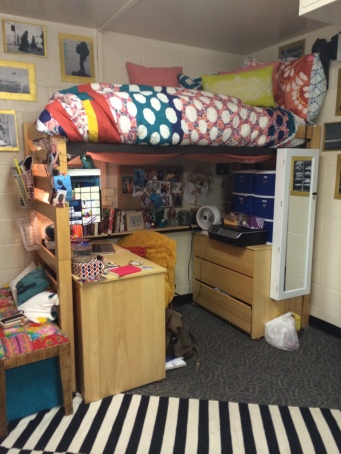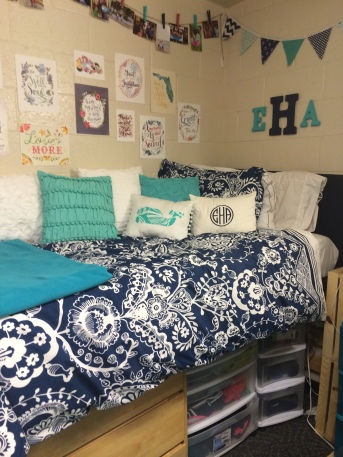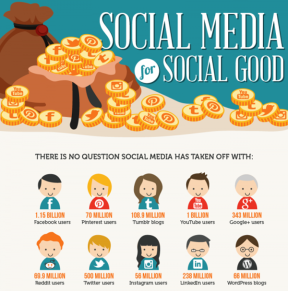What is Digital Literacy to Me?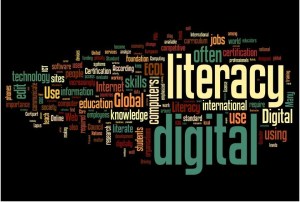
This past semester of Digital Communications has taught me many skills that will apply to the world outside college. Some of the most important skills include using media platforms to our advantage, understanding your audience and environment, and interactivity as a whole.
Glynda Hull, author of “At Last: Youth Culture and Digital Media: New Literacies for New Times” calls for an “urgent need: to expand out conceptions of what it means to be fully literate in new times.” One must exhibit all concepts considered as communicative tools. To be a digitally literate person, one must posse a variety of digital skills including an understanding of online communities and social networks and the willingness to engage. Educating citizens in the field of digital literacy is an essential component of making our culture digitally connected.
The most important digital literacies required in our digital age are interactivity, knowing how to write to a specific audience, understanding different media platforms, having a personal voice, and being a good critical thinker. Interactivity is the basis of communication. Human to human interactions does not just need to be in face to face interactions but on the web and in digital forms. It helps people feel that they are a part of something. Writing to a specific audience gives one a personal voice and can tailor it to the audience they want to direct their information. Different media platforms gives variety for the modes that information is passed along. These different platforms gives the users creative rein over what they post and how it is displayed. Lastly, being a critical thinker is a necessary skill in life in general. Being able to form your own opinions makes you individual and unique. All of these skills combined, in addition to many more creates a well educated and knowledgable person in the field of digital literacy. 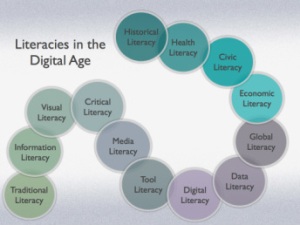
How I Used Digital Literacy in My Multimedia Project:
This semester I have focused on a blog about interior design for college students. Each of my entires were well planned and had their own subtopic to the larger, broader topic. This took critical thinking to plan out each post and sequence them for the best outcome. Interactivity was incorporated into my blog threw slideshows, hyperlinks, videos, and podcasts. I directed my posts to the specific audience of college girls between the ages of 18 to 22. This is the age group that would find my blog the most informative for this particular time in their lives. Using different media platforms gave my readers a variety of options of how they wanted to consume my information. A gave some information about myself in my blog but also a bit more in my website if they wanted to view it in a different format. My website was a wonderful platform to let my creativity take over and present myself in the most flattering light. It was also an outlet for me to use my personal voice to express my blog topic. As far as team work goes, that was exemplified in the group video and podcast. Bringing our ideas together and combining our strengths was what brought us success.
How I Have Progressed:
Over the semester, I have gained proficiency in multiple media platforms such as WordPress, Wix, photoshop, and iMovie. I hope to build upon the skills I learned and the progress I have made with regard to my website. I think it is an accurate representation of myself and displaces my skills and positive attributes in a flattering light. I would like to keep working on my website and add to it as I add experiences to my life. The content on my website expresses where I want to go in life and the types of internships and jobs I would like to have. 
Taking Digital Communications this past semester has shaped my outlook of the digital world. This class has prepared me for what is yet to come in the career and field I want to be apart of. I am well versed in the language of digital media and concider myself digitally literate.

 g, Digital Economy: Jobs of the Future by Schumpeter discusses India and China specifically and the jobs their cultures are creating for the online world. More specifically jobs are being created for online gamers, making it possible for people who are interested, to quit their jobs and begin working in the world of online gaming while getting paid. In just 2009 alone, the game World of Warcraft generated 9 billion in gaming-for-hire services. Another company using cyberwork is Amazon, having participants crowdsource for their webpage. Amazon has called this Mechanical Turk, a way to bring those looking for work online and those seeking for work to be completed online together. These tasks for online workers range in skill, from quick and easy to m
g, Digital Economy: Jobs of the Future by Schumpeter discusses India and China specifically and the jobs their cultures are creating for the online world. More specifically jobs are being created for online gamers, making it possible for people who are interested, to quit their jobs and begin working in the world of online gaming while getting paid. In just 2009 alone, the game World of Warcraft generated 9 billion in gaming-for-hire services. Another company using cyberwork is Amazon, having participants crowdsource for their webpage. Amazon has called this Mechanical Turk, a way to bring those looking for work online and those seeking for work to be completed online together. These tasks for online workers range in skill, from quick and easy to m ore complex tasks. The term “Microwork” is used to define whether the software to complete the task is provided for the worker or not.
ore complex tasks. The term “Microwork” is used to define whether the software to complete the task is provided for the worker or not. Namank Shah writes about the One Laptop per Child in A Blurry Vision: Reconsidering the Failure of the One Laptop per Child Initiative. An organization that went from a brilliant idea to a complete failure. The idea was great; give children in developing countries laptops so they can have access to the knowledge they need for only $100 per computer. The closer the project got to shipment, the more problems became evident. Initial buyers began to back out, the price of the laptop rose to $188, and there was minimal IT support to fix technical problems. OLPC project came in under their projected estimates and is now viewed by critics as a failure. One of the defining factors in their decline was their goals and budget. There needed to me a careful analysis of the culture to assess the preexisting problems before changes and adjustments were made. Local traditions and customs need to be taken into account to that the laptops can be appropriate in their context. Trying to force technology on children that don’t see the need for it causes problems. The values of the Western world are not always adaptable everywhere else. Educating our countries youths is always in the top priorities of the United States but this goal does not always translate to other countries. If the OLPC organization had made their project more directly catered to developing countries, instead of trying to force their ways upon people, their results might have been better. Are Cell Phones Running or Ruining Our Lives?
Namank Shah writes about the One Laptop per Child in A Blurry Vision: Reconsidering the Failure of the One Laptop per Child Initiative. An organization that went from a brilliant idea to a complete failure. The idea was great; give children in developing countries laptops so they can have access to the knowledge they need for only $100 per computer. The closer the project got to shipment, the more problems became evident. Initial buyers began to back out, the price of the laptop rose to $188, and there was minimal IT support to fix technical problems. OLPC project came in under their projected estimates and is now viewed by critics as a failure. One of the defining factors in their decline was their goals and budget. There needed to me a careful analysis of the culture to assess the preexisting problems before changes and adjustments were made. Local traditions and customs need to be taken into account to that the laptops can be appropriate in their context. Trying to force technology on children that don’t see the need for it causes problems. The values of the Western world are not always adaptable everywhere else. Educating our countries youths is always in the top priorities of the United States but this goal does not always translate to other countries. If the OLPC organization had made their project more directly catered to developing countries, instead of trying to force their ways upon people, their results might have been better. Are Cell Phones Running or Ruining Our Lives?  Abu Sadat Nurullah’s article The Cell Phone As An Agent of Social Change discusses how important adolescents in the United States consider technology. Specifically, cell phones are considered a tool for communication and entertainment, changing the way we view social interactions and relationships. Cell phones are considered “an agent of social change” and specifically to adolescents, having a cell phone is the norm in the 21st century. For adolescents now, it can be hard to stay in touch with their friends if they do not have a cell phone. The United States as a culture is completely reliant on the use of cell phones because we are always accessible through them.
Abu Sadat Nurullah’s article The Cell Phone As An Agent of Social Change discusses how important adolescents in the United States consider technology. Specifically, cell phones are considered a tool for communication and entertainment, changing the way we view social interactions and relationships. Cell phones are considered “an agent of social change” and specifically to adolescents, having a cell phone is the norm in the 21st century. For adolescents now, it can be hard to stay in touch with their friends if they do not have a cell phone. The United States as a culture is completely reliant on the use of cell phones because we are always accessible through them.